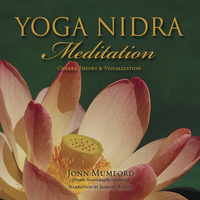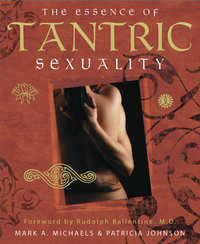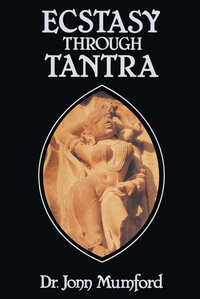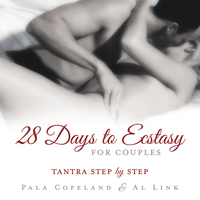Is Tantra a Religion?
As you get more and more into your study of magick, metaphysics, and the occult, you’re going to hear about Tantra. For most Westerners, Tantra is just “that sex stuff.” Some think it’s all revealed in the book, The Kama Sutra. So how could I even ask if Tantra is a religion?
Sources
Tantra is either relatively recent or many thousands of years old, developing before there was writing. It developed out of the Hindu holy scriptures, the Vedas, or is a source of the Vedas. Or maybe it evolved out of Buddhism. Or maybe it evolved into Buddhism. So the problem is that Tantra is closely linked to religions, and some members of those religions are rather dogmatic. If anyone dares disagree with their beliefs, some of those more dogmatic members of a religion often see it not as a disagreement with the belief, but as an attack on the religion.
As far as I can tell, Tantra—or more accurately, what I call proto-Tantra—appears to have originated in the pre-Hindu culture that existed on the west of India known as the Harappan or Indus Valley Culture. Just as modern Hindus revere the Ganges river, this ancient culture developed around and revered the Saraswati river. When the river dried up, the culture dissolved, spreading east and south into India and what is now called Sri Lanka, north and east into Tibet and China, and even west eventually going into Europe.
Wisdom
The Indus Valley Culture was highly advanced, with massive cities that had neat houses and city-wide sewage systems. They had a written language and modern experts have not agreed on how it should be translated. They went down the river into the Arabian Sea and Indian Ocean and were sea-faring, spreading their culture without warfare.
It’s believed that their language may have developed into Sanskrit. In that language, the root of the word for wisdom is vid. Similarly, one of the words for “tree” is dru. When some of these people spread to Europe, they brought with them the knowledge of the trees, and the people who did this were called the Dru-vids or Druids. That may be why much of the wisdom found in Western Paganism is so similar to that found in India.
As Things Evolve They Change
Compared to the Tantric culture, Christianity is a new kid on the block. And yet there are many hundreds, if not thousands of sects of Christianity today, frequently arguing with each other over which is the “true” form of Christianity. Early Christians, for example, practiced a form of communalism and socialism. Today, many Christian sects, usually calling themselves “orthodox,” are strongly anti-socialism and anti-communal. Is it any wonder, then, that the far older Tantra has evolved in numerous ways?
The early Pagans didn’t describe themselves as Pagans, it was simply their way of life. The early Wiccans and Witches didn’t call themselves Wiccans or Witches, it was simply their faith. Likewise, to the ancient Proto-Tantrics, their entire way of life was what we, today, could collectively refer to as “Tantra.” But few, if any Tantrics follow all of the ancient ways. Some Tantrics focus on magick. Some on astrology. Some on healing. Some on the physical and non-physical bodies.
Since Tantra focused on all aspects of life, it included sexuality. Some Tantrics focus on the sexual teachings of Tantra. Others focus on the religious aspects of Tantra.
Is It or Isn’t It?
So is Tantra a religion? My answer is “Yes, it is.” However just as people can study the Kabalah, the mysticism of Judaism without being Jewish and people can revere the Christian Saints without being Christian, there is no reason at all that a person cannot study the wisdom and practice techniques of Tantra without following any of the religions that are Tantric in nature. You don’t have to be a Tantric to practice Tantra.
Unfortunately, just as some Christians disagree with and even war with other Christians over their interpretation of Christianity, some Tantrics strongly disagree with other Tantrics over “what is Tantra.” Some of those who practice the techniques of Tantra associated with sexual practices, more accurately called “Neo-Tantrics,” believe that the Traditional Tantrics have missed the point and are too busy studying ancient philosophy and theology to get to their truth, that Tantra is “about” working with the energies of the body. And some of the Traditional Tantrics believe that the Neo-Tantrics are so focused on sex that they have missed the beauty of the transcendent philosophy and spirituality of Tantra as well as the knowledge of Tantric magick, divination, healing, etc.
Personally, I believe there is much to learn from the Traditional Tantrics and the Neo-Tantrics. Instead of debating over differences we should be learning from each other and honoring our similarities.
Learn More
Unfortunately, most of the books today on the religious aspect of Tantra are either boringly collegiate or are difficult to obtain. I’ve had to import many books from India to learn more.
But there are some amazing sources that you can find that can help you discover some of the wisdom of Tantra. One of my favorites is on a CD called Yoga Nidra Meditation.
 Yoga nidra is also called the ancient science of “brain breathing!” It was discovered that energy flows through different parts of our body, including our brains, at different times. If you close off one nostril and then the other while breathing, you’ll see that the path is clearer on one side or the other. This changes about every 90 minutes as the energy changes from solar to lunar. The object of yoga nidra is to extend that crossing period when your energy is perfectly balanced, resulting in self-healing and personal growth.
Yoga nidra is also called the ancient science of “brain breathing!” It was discovered that energy flows through different parts of our body, including our brains, at different times. If you close off one nostril and then the other while breathing, you’ll see that the path is clearer on one side or the other. This changes about every 90 minutes as the energy changes from solar to lunar. The object of yoga nidra is to extend that crossing period when your energy is perfectly balanced, resulting in self-healing and personal growth.
The Essence of Tantric Sexuality sounds as if it’s only going to be about sex, but it is so much more.
 In the 1970s, Llewellyn held some of the first occult festivals. Originally called the “Gnostic Aquarian Festival,” they were more commonly known as Gnosticons. Today there are hundreds of such festivals in the U.S., some attracting many hundreds and even thousands of attendees. But the Gnosticons were some of the first.
In the 1970s, Llewellyn held some of the first occult festivals. Originally called the “Gnostic Aquarian Festival,” they were more commonly known as Gnosticons. Today there are hundreds of such festivals in the U.S., some attracting many hundreds and even thousands of attendees. But the Gnosticons were some of the first.
Most people knew little about Tantra at that time. One of the speakers was Dr. Jonn Mumford, an initiated Tantric. His lectures on various Tantric concepts and practices were recorded for posterity. Unfortunately, the quality of the recordings was poor and they deteriorated over time. Even so, they were greatly desired and literally helped to jump start modern researches into Tantra.
In The Essence of Tantric Sexuality, two of Mumford’s leading students (and tradition holders) have taken those lectures and gone to the laborious work of typing them out, then used their training, knowledge, and expertise to expand upon them. Here you’ll learn about the magickal symbols known as yantras and how to work with them. You’ll also learn about Tantric perfume magick, massage magick, plus aspects of Tantric sexuality. I highly recommend this book.
In 1975, Llewellyn published Mumford’s Sexual Occultism. In 1988 it was greatly expanded and published as Ecstasy Through Tantra.
 This is a unique book as it was one of the first to compare Tantric sexuality with Western sex magick. It also has additional articles by Carl Llewellyn Weschcke, a ritual by one of my teachers, Sri Gurudev Mahendranath (known as Dadaji), and even a chapter by myself.
This is a unique book as it was one of the first to compare Tantric sexuality with Western sex magick. It also has additional articles by Carl Llewellyn Weschcke, a ritual by one of my teachers, Sri Gurudev Mahendranath (known as Dadaji), and even a chapter by myself.
Finally, if you’re looking to know more of the Tantric sexual techniques, I suggest 28 Days to Ecstasy for Couples.
 It’s a perfect step-by-step way for learning Tantric sexuality. It would make a great present that you and your partner could definitely share!
It’s a perfect step-by-step way for learning Tantric sexuality. It would make a great present that you and your partner could definitely share!










I’m impressed, a pretty well done assesment for someone not Tantric.
I do not believe Tantra is a religion, but a technology for transformation and as you said using energy as a way to understand the physical and subtle bodies.
I am Classical trained and Neo trained and I am very glad you brought up the distinctions. I would like to add a bit to it.
Neo Tantra by passes the foundations needed to even get to the enlightenment of the sexual arts of Tantra, They are using some breathing and orgasm techniques but without the foundations that are taught before all the sexual rituals, alas it is just a lot of really great fun, and there is nothing wrong with that.
Thanks for posting and I believe as you do, there are great things to learn from both.
be amazing
Tanja Diamond
Thank you for your comment, Tanja. However I have been trained and initiated into several Tantric and Neo-Tantric traditions and have taught Tantra to thousands of people all over the U.S.